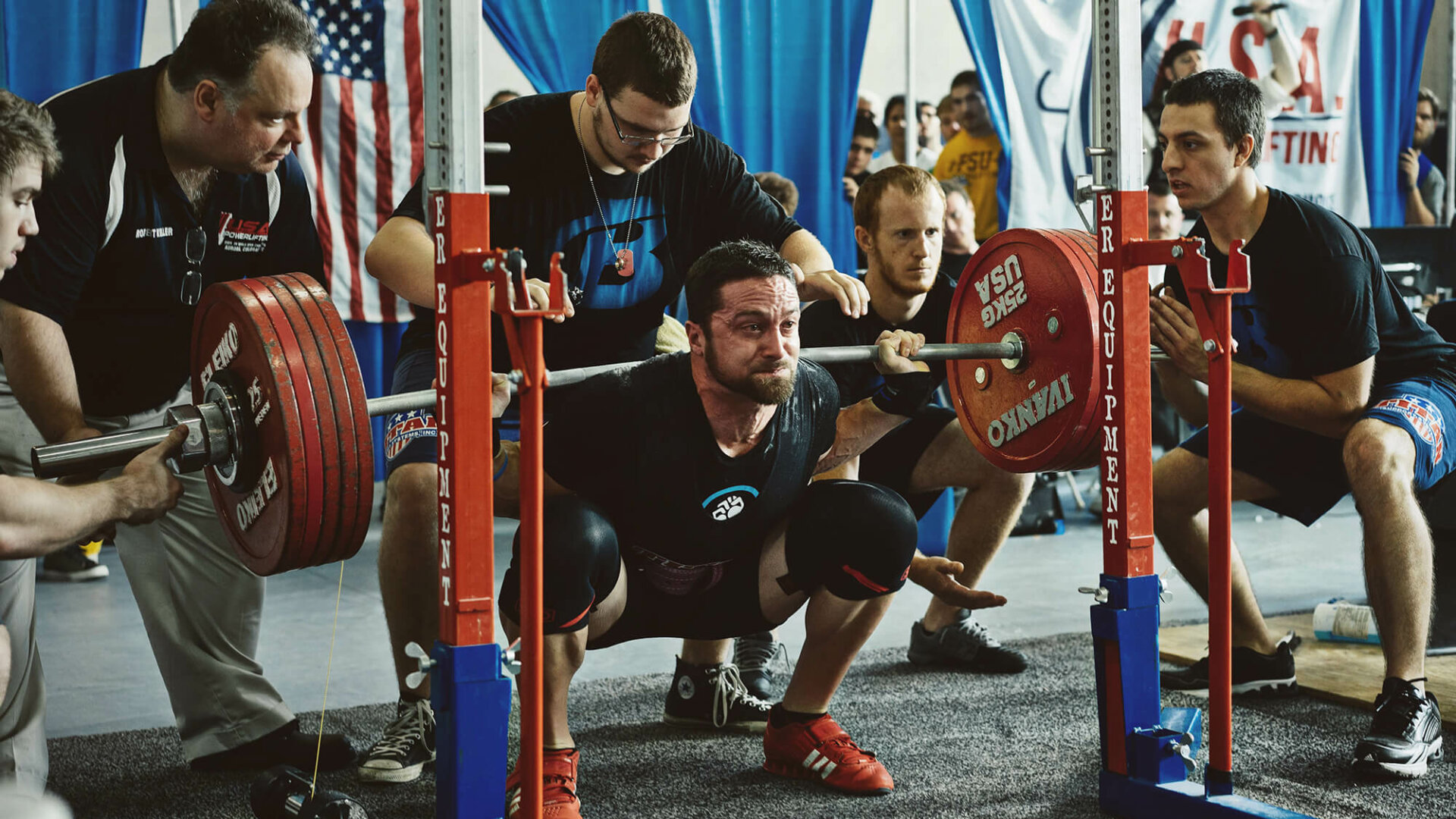Squats are awesome. Improving your squat is even better, yet it becomes harder to do the longer you’ve been doing it. So I have four variations that are going to allow you to do the following:
- Train your squat with minimal changes in your groove
- Put less stress on your shoulders
- Teach you how to get tighter
- Strengthen your abs
The downside? You may not have everything listed, but there are alternatives that you will be able to perform. It all depends on the type of gym you attend. So let’s fix your squat.
1. Cambered Bar Squats
I am starting with this one first because it is the one you will see the least. Don’t let it deter you, though. You’ll notice when you use the cambered bar that upon unracking the weight it isn’t anywhere close to being as stable as having the bar on your back. In fact, you’ll notice it move around a bit until you control it.
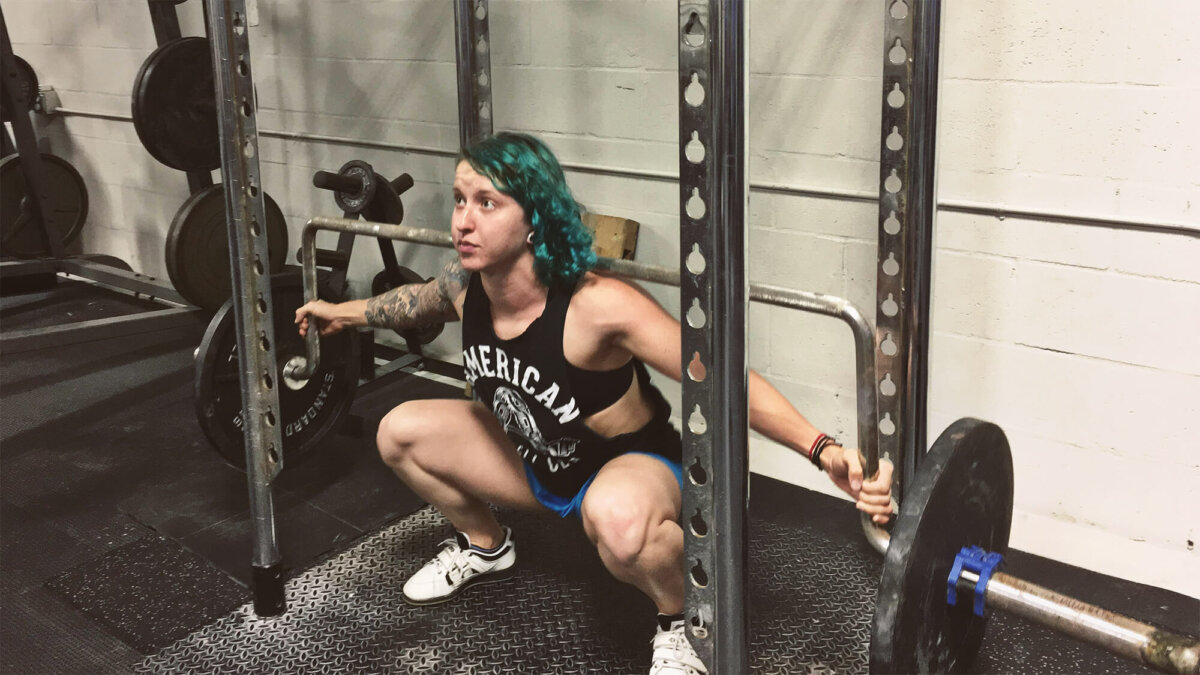
This means you have to practice your abdominal bracing, and slow the movement down. So after moving some serious weight with this bar, you’ll get even better at the tension required in a regular barbell squat. The only downside—or upside, depending on your injury history—is that your arm position won’t be the same. Your hands will be well below your shoulders for this particular squat. However, if you lack decent shoulder mobility or are recovering from an injury, then this variation will be useful for you.
2. Box Squats
If box squats aren’t a staple in your program, they should be. For one thing, you can find a box (or bench, bucket, cinder block) to meet your weak point. For many, the weak point is coming out of the hole. Adjust your box so that when you sit, you are at your desired depth. This accomplishes two things.
- Considering the SAID Principle, you are training to hit depth every single rep.
- When you are on the box you are taking your stretch reflex out of the equation. This means more power output from you due to the lack of stored elastic energy while you’re at the bottom of the squat.
- Trained with submaximal weights, it will help you increase your back squat by helping eliminate the weak point, and developing more speed.
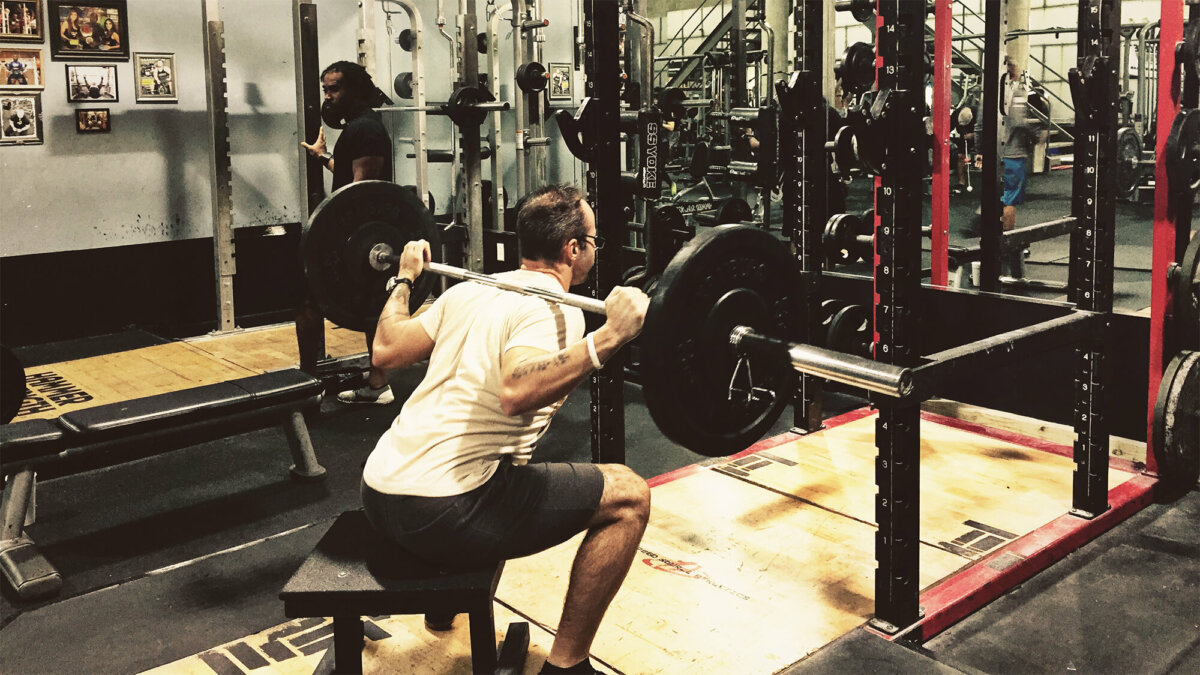
There are a few schools of thought on how to box squat. One says to lean back a bit then rock forward and explode up. The other says the rock doesn’t matter. Instead of being dogmatic about it, you need to experiment with which way you like the best. Regardless of which method you choose, there are two things you need to remember. One, if you do the rock method, do not round your lower back. If you are new to box squatting, rounding your lumbar spine will be easy to do. Two, no matter which method you choose, relax your hips on the box.
According to Louie Simmons (1), the muscle activation in the quadriceps in the wide stance squat vs. the narrow stance squat is the same. The benefit to the wider stance is to make your hips more powerful for a better athletic transfer. This isn’t to say not to squat with a narrow stance, only that you need both. It also is noteworthy that the men and women of Westside Barbell have excellent lateral hip mobility.
One last word on form, if you can’t reach the depth with the box yet, start higher. You will get better and lower.
3. Safety Bar Squats
This is a tough variation, but worth it. If you have awful thoracic spine mobility, immobile shoulders, or a shoulder injury, these are great. The shape of the bar offsets the weight to where it’s out in front of you. Moreover, you can hold the handles of the bar with varying degrees of pressure to change that. Either way, the design of the bar is such that it offsets the weight. This is going to help you. For one thing, you’re going to feel the Safety Bar Squat in your abs. This is going to help you with your intraabdominal pressure and transfer to a better back squat.
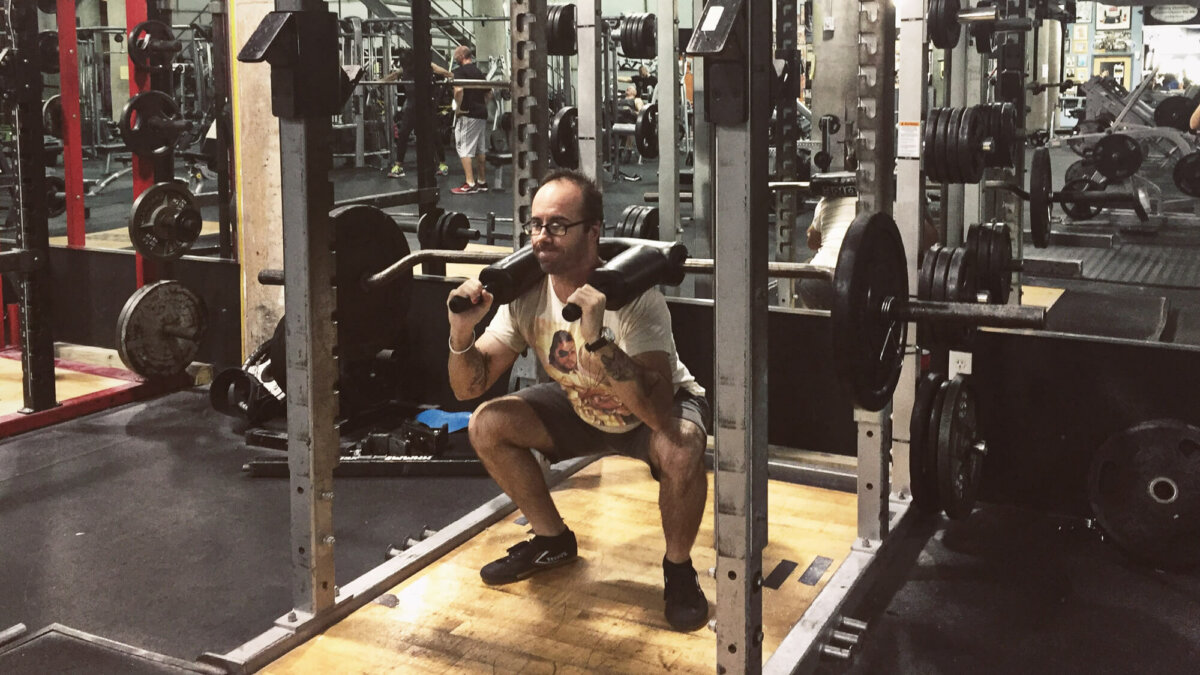
You’ll notice when you use this bar that it sits higher on your back and puts more emphasis on your quads than the other variants discussed so far. Not only that, you won’t get anywhere close to your max on this. In some cases (speaking from my own experience) there might even be a 100lb difference. But if you can ramp up those numbers, your quads will get stronger, and your bracing will improve tenfold and you will get stronger. If you don’t brace enough, you’ll fall forward. So using this in your arsenal will give you much-needed strength in your anterior chain. Spend the time developing your hip strength along with your quad strength by practicing box squats. After that, incorporate the Safety Bar.
One other benefit is that the Safety Bar puts less stress on your lower back since you are stuck in a more upright position. So if you are coming from a low back injury, it is also useful in that regard.
4. Goblet Squats
Now, this isn’t the most hardcore squat variation mentioned. In fact, it’s basic. That doesn’t make it any less useful. For one thing, the goblet squat is a great exercise as a warm up set. To use it this way, grab a 30ish pound dumbbell or kettlebell. Sink down into a deep squat and hang out there for a few seconds. Come back up. Repeat for two sets of ten, and let your hips open up.
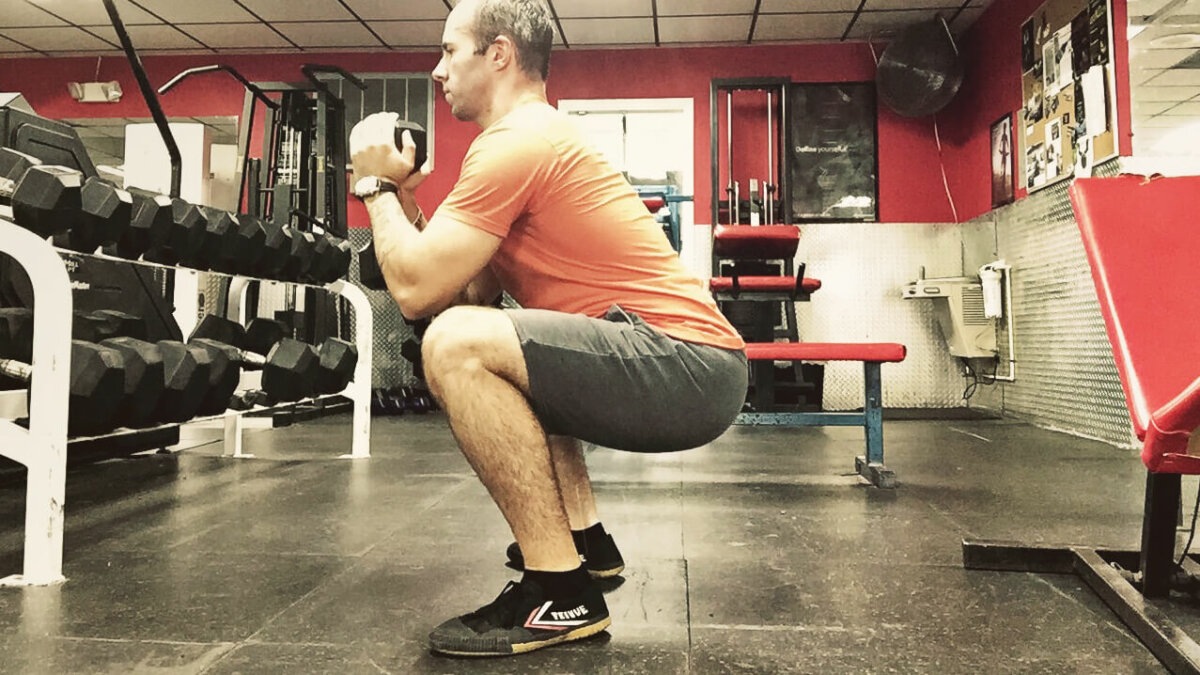
As a bonus, if you lose or gain weight, messing around with the goblet squat is a great way to find your new stance based on your new leverages. As you sink lower, move your feet and hips to see if you can find a more comfortable position and go with that. Pavel Tsatsouline coined the term “prying” and it is just like I described. Get into a low squat and wriggle around and increase your range of motion.
If you can’t do any of the other variants or your regular squat, Goblet Squats are also a solid choice. If you go heavier, you will notice some similar benefits of the safety bar—more abdominal bracing, the upright posture, and the like.
Conclusion
Specificity rules. It goes without saying. So if your goal is to get a heavier squat, you need to squat. But as with all things specific, the more you do something the less you need to ingrain the motor pattern, so it becomes necessary to add the variety. And as you uncover your weak points it also becomes essential to train those. And that’s where these variations will help you.
Besides that, you have four different varieties of squats here to choose from. With that, you can mix and match. And with the box squat, you can make further combinations. My absolute favorite for getting strong as hell is the Safety Bar Box Squat. Tread light and do not overestimate your capabilities on that one.
Last, there is an order to this. Practice specificity first, when you can. Assess the weaknesses. Choose your variety based on that, and based on what you have available to you at a given time.
